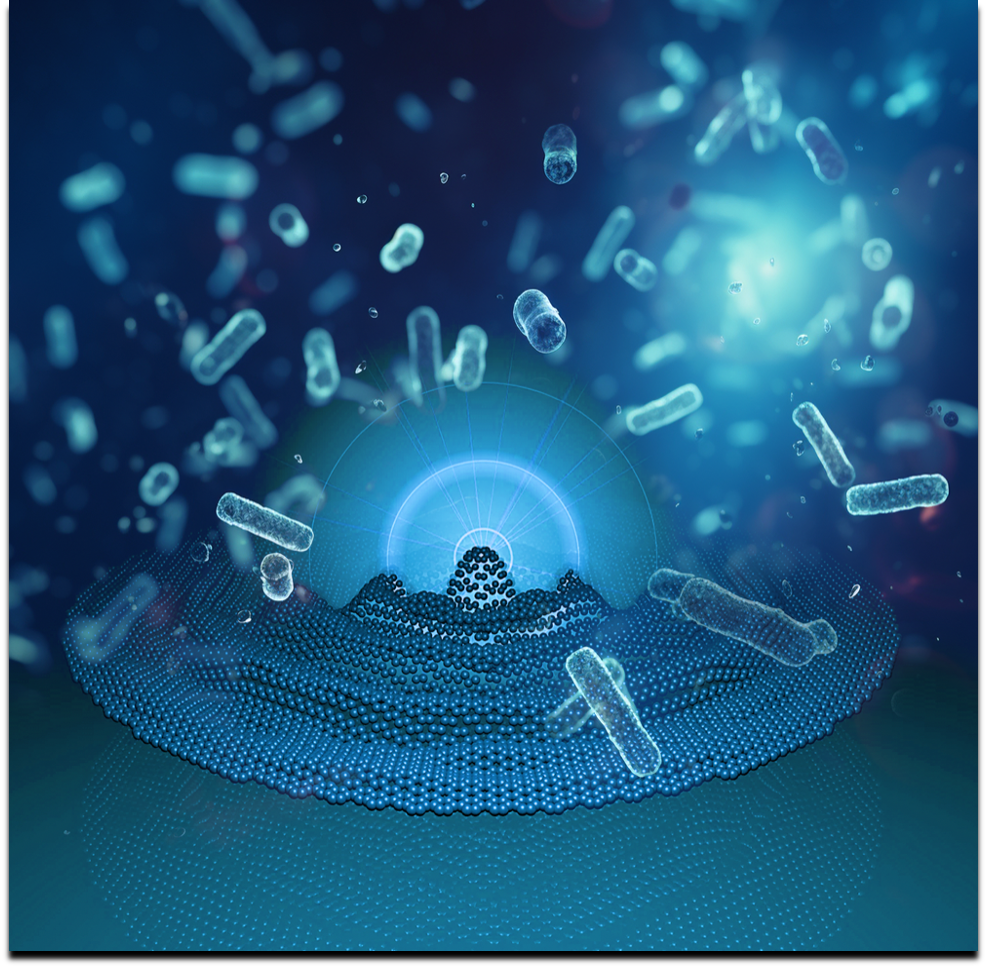ERC Consolidator Grant for ultra-sensitive 2D material membranes in frequency-based metrology and bacteria sensing
Last year, scientists at TU Delft achieved a remarkable feat by using graphene to capture the sound of an individual bacterium. In order to improve these kind of 2D ultra-sensitive sensors, the nanomechanics of this material have to be studied in more detail. Farbod Alijani, associate professor at the faculty of Mechanical, Maritime and Material Engineering, received an ERC Consolidator Grant for this project. His ultimate goal is to improve the mechanical performance of 2D material sensors and use them for rapid screening tests in drug development and personalized medicine.
“Graphene is a one atom thick material that is very strong but at the same time flexible and incredibly lightweight,” explains Farbod Alijani, who works at the department of Precision and Microsystems Engineering. It is considered a promising material with countless applications. “But there’s a catch,” says Alijani, “graphene is very susceptible to noise and nonlinearities, which negate its performance. As a result, often large variations are seen in its dynamical properties when driven to motion.”
Biological noise
Alijani’s research project NCANTO will focus on the fundamental understanding of the combination of noise and nonlinearities in 2D material membranes like graphene. He wants to engineer nonlinearities in them to suppress noise for cutting-edge nanomechanical performance, while amplifying rhythms from unpredictable biological noise, when single microorganisms are interacting with 2D membranes.
With biological noise Alijani refers to nanoscale fluctuations of microorganisms. “We already showed that graphene can capture the sound of a single bacterium, mainly because of its flagella, a tail on the cell surface that propel bacteria.” This generated extremely small and random vibrations in the graphene sensor.
In the future, I hope this will lead to a better understanding of the nanoscale signals emitted by bacteria.
Farbod Alijani
In order to improve single cell sensing, the aim is to create order in the randomness of these vibrations. “We want to do this by nanoengineering and making use of nonlinear dynamic techniques to influence the behaviour of bacteria, such that they align their movement, thus creating a biological rhythm instead of noise.”
“In the future, I hope this will lead to a better understanding of the nanoscale signals emitted by bacteria. This will help to develop better drug screening tools, especially for antibiotics, contributing to tackling the worldwide antimicrobial resistance challenge,” concludes Alijani.
European Research Council
The ERC is the premier European funding organisation for excellent frontier research. The ERC Consolidator Grants are designed to support mid-career researchers and will help them conduct cutting-edge research on topics of their choice. The funding is for a period of five years.

